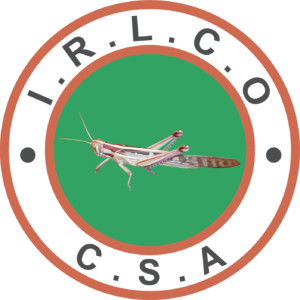Desert Locusts
The Most Devastating Migratory Pest in the World
Overview of Desert Locust
The Desert Locust (Schistocerca gregaria) is one of the most feared agricultural pests in the world, capable of forming large swarms that devastate crops and pastures across vast regions. Known for their ability to travel great distances and consume nearly all vegetation in their path, Desert Locusts pose a severe threat to food security in many parts of Africa, the Middle East, and South Asia. Their potential for destruction has made them a critical focus of pest management efforts by international organizations, including IRLCO-CSA.
Habitat
Desert Locusts primarily inhabit the arid and semi-arid regions of North Africa, the Middle East, and South Asia. These areas, characterized by sparse vegetation and unpredictable rainfall, provide the ideal conditions for locusts to breed and thrive.
Lifecycle
The lifecycle of the Desert Locust begins with the laying of eggs in moist sandy soil, typically following a period of rainfall. The eggs hatch into wingless nymphs, known as hoppers, which go through several developmental stages before reaching adulthood.
Impact on Agriculture
The impact of Desert Locusts on agriculture is catastrophic. A single swarm can cover hundreds of square kilometers and contain billions of locusts, each capable of consuming its weight in food every day. This means that a swarm the size of Paris could eat as much food in a day as half the population of France.
Control Measures
Controlling Desert Locust populations is a complex task that requires a combination of strategies. Chemical control through the use of insecticides remains the most effective method for quickly reducing locust numbers during an outbreak. However, IRLCO-CSA also advocates for the use of environmentally sustainable practices, such as biological control agents and the integration of traditional knowledge in managing locusts.
